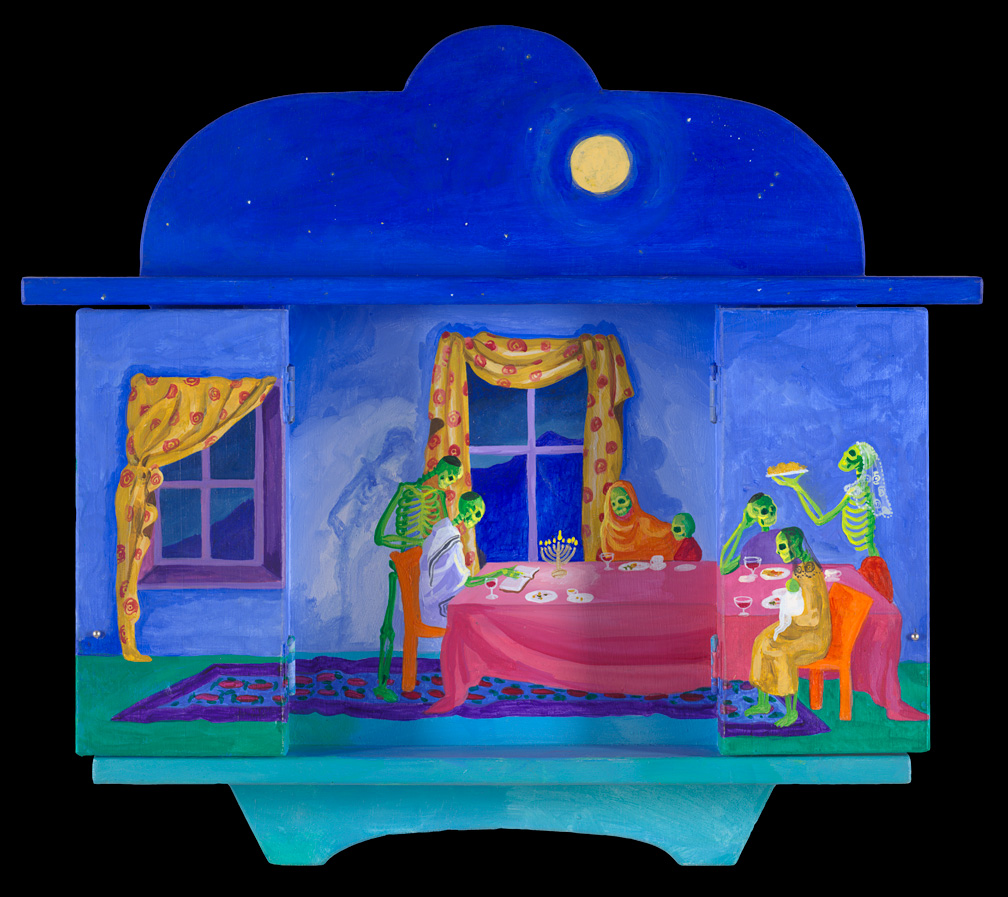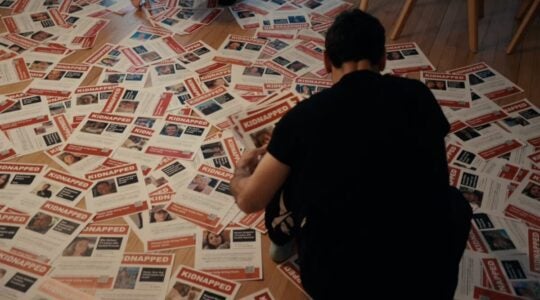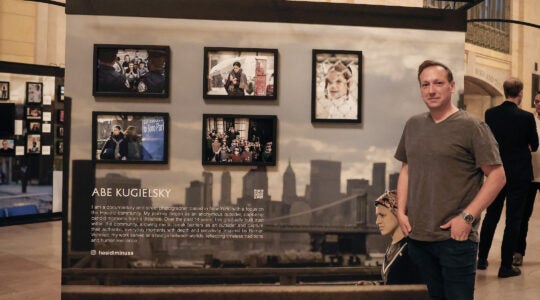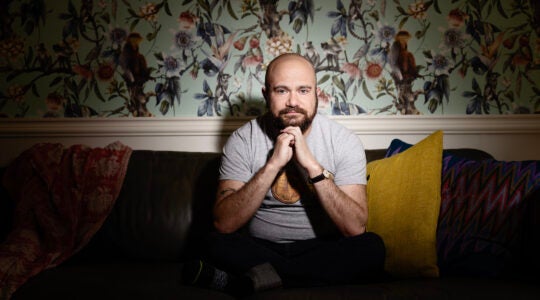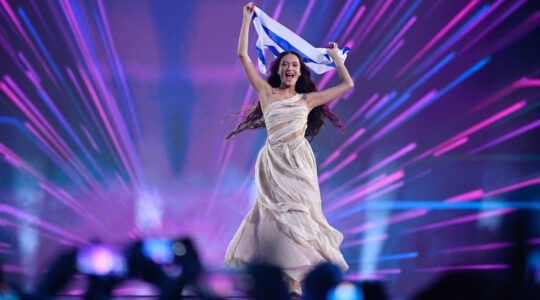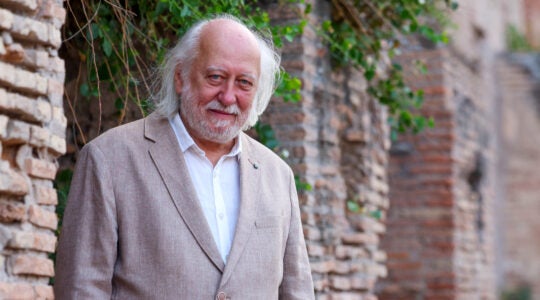
A Nicho by Anita Rodriguez with the doors closed, showing a Christmas scene. (Anita Rodriguez)

A crypto-Jewish secret wedding by Anita Rodriguez. (Anita Rodriguez)
LOS ANGELES (JTA) – Artist Anita Rodriguez’s “aha” moment came after reading “To the End of the Earth: A History of the Crypto-Jews of New Mexico.”
The 2005 book by New Mexico’s former state historian, Stanley Hordes, tells the story of the Southwest’s Converso settlers and the elements of their Sephardic heritage – among them lighting candles on Friday night and refraining from eating pork — that were passed down over 500 years.
It suddenly dawned on Rodriguez, a Catholic from Taos whose family has lived in New Mexico for 10 generations, that her neighbors may have been reticent to talk about religion because of secret family histories.
“Growing up in Taos, I quickly learned that it was taboo to ask people about their religion,” she told JTA.
Rodriguez is one of several artists planning to exhibit Crypto-Jewish-themed paintings and folk art at the conference of the Society for Crypto-Judaic Studies to be held July 22-24 in Albuquerque. Among the featured speakers will be historian David Gitlitz, author of “Secrecy and Deceit: The Religion of Crypto-Jews,” and Santa Fe educator Isabelle Medina Sandoval, author of “Hidden Shabbat: The Secret Lives of Crypto-Jews
.”
“Artwork makes people want to know more about their own identity,” said Dolores Sloan, president of the society, which helped obtain grants to bring artists to the conference.
The gathering, which will include a genealogy workshop, is part of a continuing effort to reveal the stories of those who may have had a hidden Jewish past. A recent genetic survey published in the Journal of Human Genetics revealed new DNA evidence that Spanish Americans of the Southwest likely had Jews in their family trees. The Crypto-Jews of New Mexico are said to be descendants of Sephardic Jews who were forced to convert during the Spanish Inquisition.
After reading Hordes’ book and researching Jewish life, Rodriguez began painting Southwestern- and Mexican-influenced scenes of the secret Jewish lives that she imagined her neighbors’ ancestors had practiced.
Among the works she will bring to the conference is a large pink, turquoise and royal blue painting influenced by Mexican Day of the Dead art, depicting a Jewish wedding scene in which the groom, bride and wedding party are all ghostly skeletons.
Another one, titled “Hora,” shows skeletons dancing around a Jewish bride on a raised chair.
“These could be ancestors who come back on the day of the dead and act out scenes from their lives,” Rodriguez said.
In another work she calls “nichos,” a takeoff on a traditional Latin American form of folk art, Rodriguez uses painted wooden boxes created from kiln-dried wood. Painted in a folk art style with brightly colored acrylic paint, the boxes, which have two hinged doors, reveal what she sees as the duality of the Crypto-Jewish life.
For example, on one nicho, a Christmas Eve scene is shown with people streaming in to the village church. Open the box’s doors and painted on the inside is a skeletal Jewish family seated at table with a lit menorah.
“There are some truths that can only be spoken in the voice of art,” Rodriguez said.
Rodriguez says that when she shows her work in New Mexico, some people have whispered in her ear things like, “I need to talk, but can’t meet you downtown.” One person, the artist says, told her that after seeing her work he spent a night sneaking through a graveyard looking for signs of Crypto-Jewish heritage on his ancestor’s headstones.
“I have had close friends who have made the discovery,” Rodriguez said. “Some are furious because they were lied to; some even go back to Judaism.”
In researching her own family history, Rodriguez discovered that the name Rodriguez appears frequently on lists of surnames of families forced to convert. She hasn’t taken the low-cost genetic test now available that could cast light on her ethnic heritage.
Diana Bryer, another New Mexico artist exhibiting at the upcoming conference — her work depicts secret Sephardic symbols like six-pointed roses and families holding secret seders — says she has had moments of recognition, too.
“One person came over to me and said, ‘I think I have Jewish roots. There are things in here that my family did,’ ” said Bryer, who comes from an Ashkenazi Jewish background. “People have feelings, and those feelings should be acknowledged.”
JTA has documented Jewish history in real-time for over a century. Keep our journalism strong by joining us in supporting independent, award-winning reporting.
